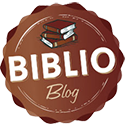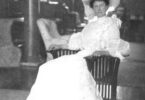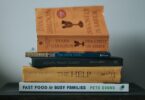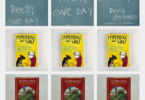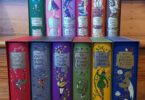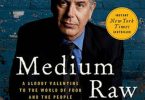In the United States, October 12th is Indigenous Peoples’ Day, a holiday that celebrates and honors Native American peoples and commemorates their histories and cultures. Indigenous Peoples’ Day offers a reframing of the narrative that Christopher Columbus ‘discovered’ America. It is a way to acknowledge the people who originally lived on the land we call America and be educated to respect their current culture as it stands today.
Columbus Day was officially signed in as a holiday by Richard Nixon in 1972. Since then there has been pushback about the glorification of what Columbus represented, because for the original Americans he represented the beginning of the takeover of their land, leading to the death of millions and the forced assimilation of those who survived. As early as 1977 there were formal proposals for Indigenous People’s Day to replace Columbus Day as a way to recognize the first Americans and celebrate their culture.
In 2016, Biblio’s hometown of Asheville, North Carolina adopted Indigenous People’s Day as a motion toward inclusivity, noting that Asheville was built on the homeland of people who were settled long before the ‘discovery’ of America by European explorers.

There are many resources to learn more about American Indians.
The American Indians in Children’s Literature website offers a “Tips for Teachers”. The first tip includes an explanation of terms:
“‘American Indian’ and ‘Native American’ are broad terms that describe the Native Nations of peoples who have lived on North American for thousands of years…best practice it to teach about and use the name of a specific Native Nation.”
The American Indian Library Association has great resources: https://ailanet.org/resources/
As does the National Museum of the American Indian: https://americanindian.si.edu/nk360
Many sources warn against only teaching about Native Americans during Columbus Day and Thanksgiving. Yet, it is always a good time to re-evaluate and re-educate to establish a more inclusive and honest narrative. Becoming more culturally sensitive and aware, acknowledging not only history but current events impacting Native peoples, will lead to a better world for us all. From greater understanding comes a deeper culture of respect, holding space for sacred artifacts and symbols instead of using them as decorations and souvenirs, and rethink the impact of harmful representation in popular culture (i.e., mascots.) This work is especially important for the positive impact it can have on the next generation.
Any highly recommended place to expand your knowledge is, of course, books! Below are a few books by Indigenous American authors that are recommended reading any time of the year:
The Youngest Readers – Picture Books:

We Are Grateful: Otsaligeliga
written by Traci Sorell, illustrated by Frane Lessac
A look at modern Native American life, from fall to summer, We Are Grateful: Otsaligeliga includes a full year of celebrations and customs told by a citizen of the Cherokee Nation. This book, first published by Penguin Random House in 2018, has won numerous awards and is great for all kids, especially 4 through 7.
A Coyote Columbus Story
written by Thomas King, illustrated by William Kent Monkman
A Coyote Columbus Story is a picture book retelling of the Columbus story from the Native point of view involving a trickster Coyote. First published by Groundwood Books in 1997.

The Hunter’s Promise: An Abenaki Tale
retold by Joseph Bruchac, illustrated by Bill Farnsworth
World-renown story-teller Joseph Bruchac recounts this tale of love, loyalty, trust, and magic that can be found in many forms among the indigenous nations of the northeast. The Hunter’s Promise: An Abenaki Tale is a picture book good for ages 4 – 8.
Giving Thanks: A Native American Good Morning Message
written by Chief Jake Swamp, illustrated by Erwin Printup Jr.
Giving Thanks is a picture book based on the traditional Mohawk morning prayer, or “Thanksgiving Address to Mother Earth.” First published by Lee & Low Books in 1997, this Reading Rainbow book is great for ages 5-11.
The Very First Americans
written by Cara Ashrose, illustrated by Bryna Waldman
A simple picture book for ages 4 – 7, The Very First Americans details how various Native Americans lived before Columbus landed in America. This book was first published by Grosset & Dunlap in 1993.
Go Show the World: A Celebration of Indigenous Heroes
written by Wab Kinew, illustrated by Joe Morse
This picture book, great for ages 5-9, features a rap inspired by President Barack Obama’s Of Thee I Sing. Go Show the World highlights the accomplishments of historic and modern-day Indigenous heroes and celebrates their stories as a source of pride.

The People Shall Continue
by Simon J. Ortiz
This poem, The People Shall Continue, was written by Simon J. Ortiz was first published as a picture book in 1977. It offers a history of Native people in America from Creation to the present-day, for readers ages 7-11.
Mid-Grade and Young Adult:
1621: A New Look at Thanksgiving
by Catherine O’Neill Grace
Published in 2004 by National Geographic Children’s Books, “This book presents the true story of the origins of Thanksgiving with a balanced English and Native American perspective and features a reenactment by the Plymouth Plantation of the 1621 harvest. Includes full-color photos. Countering the prevailing, traditional story of the first Thanksgiving with its black-hatted, silver-buckled Pilgrims; blanket-clad, be-feathered Indians; cranberry sauce; pumpkin pie; and turkey, this lushly illustrated photo-essay presents a more measured, balanced, and historically accurate version of the three-day harvest celebration in 1621.” Grades 3-8
The Birchbark House
by Louise Erdrich
The Birchbark House is the first book in the series by Louise Erdrich, written about a young Ojibwa girl named Omakayas living on an island in Lake Superior around 1847. This book reverses the usual narrative perspective in children’s stories, like the Little House books that present Native Americans in the nineteenth-century as dangers or curiosities. The Birchbark House was first published in 1999 and is followed by The Game of Silence (2006), The Porcupine Year (2008), Chickadee (2012), Makoons (2016). Ages 9 and up.
The Absolutely True Diary of a Part-Time Indian

by Sherman Alexie
This novel, published in 2007 and winner of the National Book Award for Young People’s Literature, has made numerous appearances at the top of various banned book lists. The Absolutely True Diary of a Part-Time Indian revolves around Junior, a 14-year-old growing up on a Spokane Indian Reservation. Frustrated with his own poverty-stricken school district he transfers to an all-white high school off the reservation. Despite the controversy, the book brings up, many teachers find it important to teach because of its messages of resilience and the importance of education and community. Ages 13 and up.
Trickster: Native American Tales
edited by Matt Dembicki
Published in Jun 2010, Trickster: Native American Tales is the first graphic anthology of Native American Trickster Tales, combining 24 Native storytellers with 24 comic artists in a graphic novel great for ages 12 and up.
Looks Like Daylight: Voices of Indigenous Kids
by Deborah Ellis
In Looks Like Daylight: Voices of Indigenous Kids, Deborah Ellis presents interviews with dozens of youth ages 9 to 18 from among the 565 federally recognized Native tribes in the United States and 617 First Nations communities in Canada. There is a brief introduction involving historical context, as well as introductions to each interviewee. Through these first-person interviews, the children are given a voice and there is a commonality of interest and growing up that will reach any reader.
An Indigenous Peoples’ History of the United States for Young People
by Roxanne Dunbar-Ortiz, adapted by Debbie Reese and Jean Mendoza
An adaptation of Roxanne Dunbar-Ortiz’s An Indigenous Peoples’ History of the United States which won the 2015 American Book Award. This text is considered by many to be one of the pivotal texts rewriting the conventional narrative of American history.
How I Became A Ghost: A Choctaw Trail of Tears Story

by Tim Tingle
How I Became A Ghost was first published in 2013. The story is told from the viewpoint of Isaac, a Choctaw boy who does not survive the Trail of Tears. How I Became A Ghost is the first book in a trilogy by author Tim Tingle. The second book, When a Ghost Talks, Listen, was published in 2018.
If I Ever Get Out of Here
by Eric Gansworth
First published in 2013, If I Ever Get Out of Here is a YA novel by Eric Gansworth about Lewis “Shoe” Blake, a teenager growing up on the Tuscarora Indian Reservation in the 1970s. With titles that center around Rock’n’Roll songs this story is about family and friendship, poverty and memory,
Adult Reads:
The Round House

by Louise Erdrich
Published in 2012, The Round House, the second installment of author Louise Erdrich’s ‘Justice Trilogy’ was awarded the National Book Award. 13-year-old Joe Coutts lives on the Ojibwe reservation in North Dakota. After his mother is brutally attacked, Joe goes in search of the perpetrator.
There, There
by Tommy Orange
First published in 2018 and set in the present-day urban landscape of Oakland, California, There, There combines the narratives of a plethora of voices, young and old, to weave a masterful story of what it’s like to be Native in the modern world. The character’s stories all intersect at the Big Oakland Powwow for a chaotic climax.
You Don’t Have to Say You Love Me

by Sherman Alexie
After the death of his mother, author Sherman Alexie grappled with their complicated relationship in the best way he knew how – he wrote. You Don’t Have to Say You Love Me, published in 2017, is Alexie’s personal memoir about his life and the sometimes abusive mother whom he couldn’t help but adore.
The Lone Ranger and Tonto Fistfight in Heaven
by Sherham Alexie
Published in 1993, the short-story collection Lone Ranger and Tonto Fistfight in Heaven is one of Sherman Alexie’s earliest works. In 1998 it was adapted into the film Smoke Signals.
Conflict Resolution for Holy Beings: Poems
by Joy Harjo
In 2019 Harjo was the first Native American to be named United States Poet Laureate. Conflict Resolution for Holy Beings, published in 2015 by W.W. Norton & Company, was her 14th published book of poetry. She also has written children’s books, and non-fiction, including her 2012 memoir Crazy Brave.
Crazy Brave: A Memoir
by Joy Harjo
Published in 2012, Crazy Brave: A Memoir follows the author’s quest to find her voice in music and poetry against the backdrop of her tribal ancestry and familial trauma.
Everything You Wanted to Know About Indians but Were Afraid to Ask
by Anton Treuer
Published in 2012, Everything You Wanted to Know About Indians but Were Afraid to Ask, written by Ojibwe scholar and cultural preservationist Anton Treuer, offers candid answers to over 120 questions, both thoughtful and outrageous, modern and historical, in an effort to clear up cultural misunderstandings.
Native Universe: Voices of Indian America
Native Universe: Voices of Indian America was originally published in 2008 to coincide with the opening of the Smithsonian’s National Museum of the American Indian, the last museum to be built on the National Mall. The National Geographic Society collaborated with the museum’s curators and advisers to produce a comprehensive volume, written by a distinguished group of Native American scholars, poets, activists, and tribal leaders. The volume presents firsthand prose based around major themes relevant to American Indian peoples and includes more than 300 full-color illustrations.
Other Resources:
8 ways to observe Indigenous Peoples’ Day with children
Decolonizing Thanksgiving: A Toolkit for Combatting Racism in Schools
Amy C. Manikowski is a writer living in Asheville, NC.
